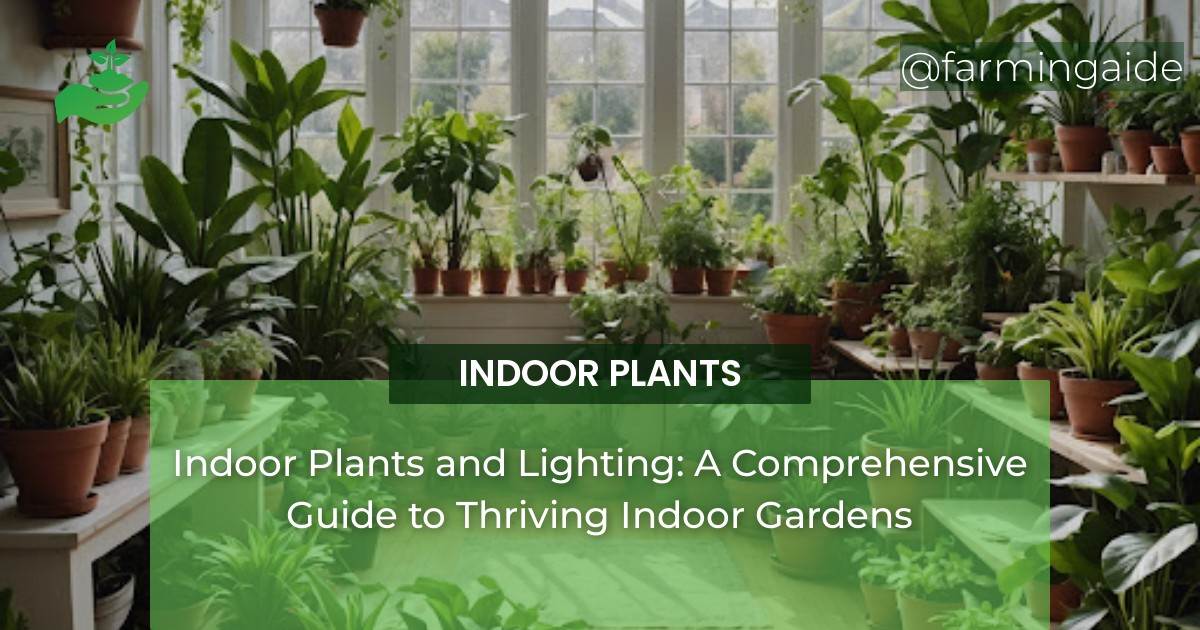Welcome to your ultimate guide on indoor plants and lighting! Whether you’re a seasoned green thumb or a budding plant enthusiast, understanding how to light your indoor plants effectively is crucial for their health and your enjoyment. This comprehensive guide will walk you through everything from the basics of plant lighting to advanced techniques that will help your indoor garden flourish.
Key Takeaways
- Different types of light affect plant growth differently.
- Selecting the right plants for your light environment is essential.
- Positioning and artificial lighting can optimize plant growth.
- Common challenges like too little or too much light have solutions.
- Advanced techniques such as timers and specific light bulbs can enhance plant health.
Understanding the Role of Light in Indoor Plant Growth
Types of Light and Their Effects on Plants
Light is a fundamental element for photosynthesis, the process by which plants convert light into energy. Different types of light, including full spectrum, fluorescent, and LED, each offer unique benefits and are suited to various plant needs.
Full spectrum light mimics natural sunlight, making it ideal for most indoor plants. Fluorescent lights are great for low-light plants, while LED lights can be customized to specific wavelengths that promote growth.
| Light Type | Suitable Plants | Benefits |
|---|---|---|
| Full Spectrum | Most indoor plants | Mimics natural sunlight |
| Fluorescent | Low-light plants | Energy-efficient |
| LED | High-light plants | Customizable wavelengths |
Assessing Your Indoor Lighting Conditions
Before selecting plants, assess the natural light in your space. Consider the direction of your windows, the presence of obstructions, and the time of day when light is most available.
North-facing windows provide low light, suitable for shade-loving plants. South-facing windows offer bright, direct light ideal for sun-loving varieties.
Selecting the Right Plants for Your Light Environment
ALSO READ
Low Light Tolerant Plants
Plants like snake plants and pothos thrive in low light conditions, making them perfect for darker corners of your home.
These plants adapt well to fluorescent lighting, which can supplement natural light when necessary.
Bright Light Loving Plants
For brighter areas, consider plants like succulents and cacti, which require more light to thrive. These plants benefit from full spectrum or LED lighting if natural light is insufficient.
Optimizing Light Exposure for Indoor Plants
ALSO READ
Positioning Plants for Optimal Light
Positioning is key to ensuring your plants receive the right amount of light. Rotate plants regularly to ensure all sides receive equal exposure, and adjust locations based on seasonal changes in natural light.
Using Artificial Light to Supplement Natural Light
Artificial lights can be a great supplement, especially during winter months or in darker interiors. LED and fluorescent lights are effective and energy-efficient options.
Common Challenges and Solutions in Indoor Plant Lighting
Dealing with Too Little Light
If your plants aren’t getting enough light, consider moving them closer to windows or supplementing with artificial lights. Regular rotation can also help distribute light more evenly.
Managing Excessive Light Exposure
Too much light can scorch leaves and stunt growth. Move plants to shadier spots or use sheer curtains to diffuse light.
Advanced Techniques for Indoor Plant Lighting
Timers and Light Schedules
Using timers to regulate light exposure can mimic natural daylight cycles, promoting healthier plant growth. Most plants benefit from 12-16 hours of light per day.
Choosing the Right Light Bulbs for Plants
Different bulbs emit different wavelengths of light, affecting plant growth. Full spectrum bulbs are versatile, while others may be tailored to specific growth stages or plant types.
Conclusion: Mastering Indoor Plant Lighting for a Flourishing Garden
By understanding the role of light in plant growth and implementing strategies to optimize light exposure, you can create a thriving indoor garden that enhances your home’s beauty and air quality. Whether you choose natural or artificial lighting, the key is to provide the right type and amount of light for each plant species. With this guide, you’re well-equipped to tackle any lighting challenge and enjoy the lush greenery of your indoor oasis.


